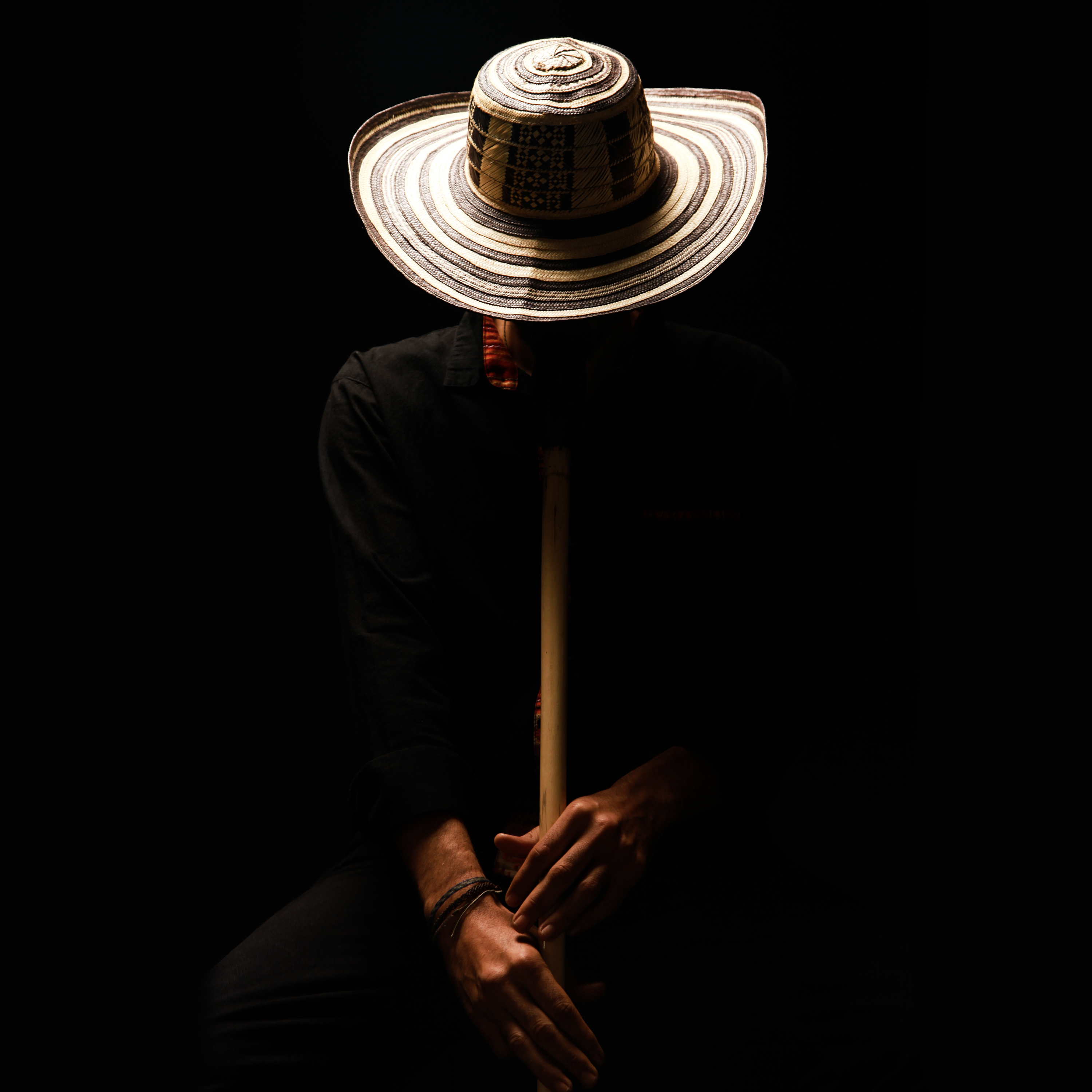El León Pardo


Jorge Emilio Pardo Vásquez AKA El Leon Pardo was born on 20 December 1988 in Tunja, in central Colombia. His father was from nearby Boyacá, while his mother hailed from the northern city of San Jacinto. When Jorge Emilio was less than a year old, his mother went back to the Caribbean coast, to Cartagena, taking Jorge with her. The city would have an early influence on his personality and his sound. He started playing music when he was eight, when he received a kuisi, traditional pipes that are still sold at craft stalls in the Las Bóvedas tourist spot in Cartagena.
His mother encouraged him to play the saxophone he inherited from his maternal grandfather, paying for his first classes. Jorge Emilio grew up with the memory of his talented saxophonist grandfather, who once played with the likes of Lucho Bermúdez and Pedro Laza y sus Pelayeros, in the golden age of Colombian music. His respect for his grandfather’s legacy and his family’s musical taste gave Jorge Emilio a keen ear and his early aesthetic. His saxophone classes continued until one event, which the family still remembers, abruptly cut short his education at home: his teacher borrowed his inherited saxophone… and never came back. To this day, twenty years on, nobody knows where that teacher went or why he stole the sax.
The years passed and El León, still a boy, played a keyed trumpet for the war band of the Abolsure military school, but it was with the music project of the C.E.C (Ciudad Escolar Comfenalco) that his teacher Álvaro Hernandez started him on the trumpet. As fate, or fortune, would have it, Jorge Emilio didn’t get a place on the saxophone part of the project, looked for other brass options and ended up on the trumpet. After he spontaneously played “Pensando en ti” with perfect pitch, Hernandez decided Jorge Emilio should continue on the trumpet. Jorge Emilio wasn’t all that convinced, but agreed to begin his musical studies.
In those days, still between childhood and adolescence, Jorge Emilio built up his relationship with the kuisi bunsi thanks to Juan Carlos Medranoa, another source of inspiration who would connect him with the sounds of Montes de María, a special geographic point for the music of the Americas and for the particular history of Colombia. The profound mysticism of the kuisi bunsi’s melody, its magical sound evoking contrasting realities and emotions, and the free, peasant character of the music connected with Jorge Emilio’s spirit then and forever.
Like a calling he can still hear, El León Pardo began a careful study of this instrument and the verses that accompany its melodies. He soon discovered the genuine call of the kuisi and just the right sound in his voice to sing the lines, and began to play the music of his female ancestors.
He alternated his musical initiation between the kuisi and the trumpet, two wind instruments that forged his all-important decision to follow his career as an artist.
By the time he was a teenager, El León Pardo had received a thorough grounding in Caribbean rhythms from the school’s musical project. He had a definite inclination for music, after years on the local artistic scenes of Cartagena and the surrounding area, and decided to continue his professional education in symphonic studies, in the city of Bucaramanga, far from the sea.
It was Bucaramanga, “the pretty city,” that marked a break in Jorge’s music. Against the backdrop of the Chicamocha Canyon, he joined the rasqa band Velandia y La Tigra led by Edson Velandia. Jorge Emilio connected with what the band was doing musically and creatively and decided to drop out of his symphonic studies to join the band and explore the scene.
After travelling around Colombia and abroad as a keyboard player, backing vocalist and trumpeter with Edson, Henry Rincón and Daniel Bayona, Jorge Emilio decided to take a break from the band and look for his own phrasings and sounds in music. This led to Cumbia Ácida, his first album, made at home with the help of friends and family.
Pardo was now El León. By the sea in La Boquilla, a fishing village close to Cartagena, he put years into the creation of Cumbia Ácida and the songs that would later establish him, nationally and internationally, as the creator and representative of a totally original sound, dialoguing with the present, past and future of the winds in the tropics.
In 2018, El León Pardo rejoined Velandia y La Tigra and has kept in close contact with the band’s creative processes since then. Today, El León Pardo, a name he gave himself in those years of searching far from the sea and close to the Andes, is based in Bogotá, the Colombian capital, where he spends his life composing, making traditional kuisis, singing, and playing his wind instruments on stages around the world with his project and with groups like Ondatrópica, Curupira, Frente Cumbiero and the collective Mestizo collective. He and his band are gearing up for the release—in 2025 with AYA Records—of their second album, Viaje Sideral, a new sound discovery that dialogues with syncretic and futuristic nature, a typical trait in the music of El León Pardo.
It’s beautiful to see that this journey is only just beginning.